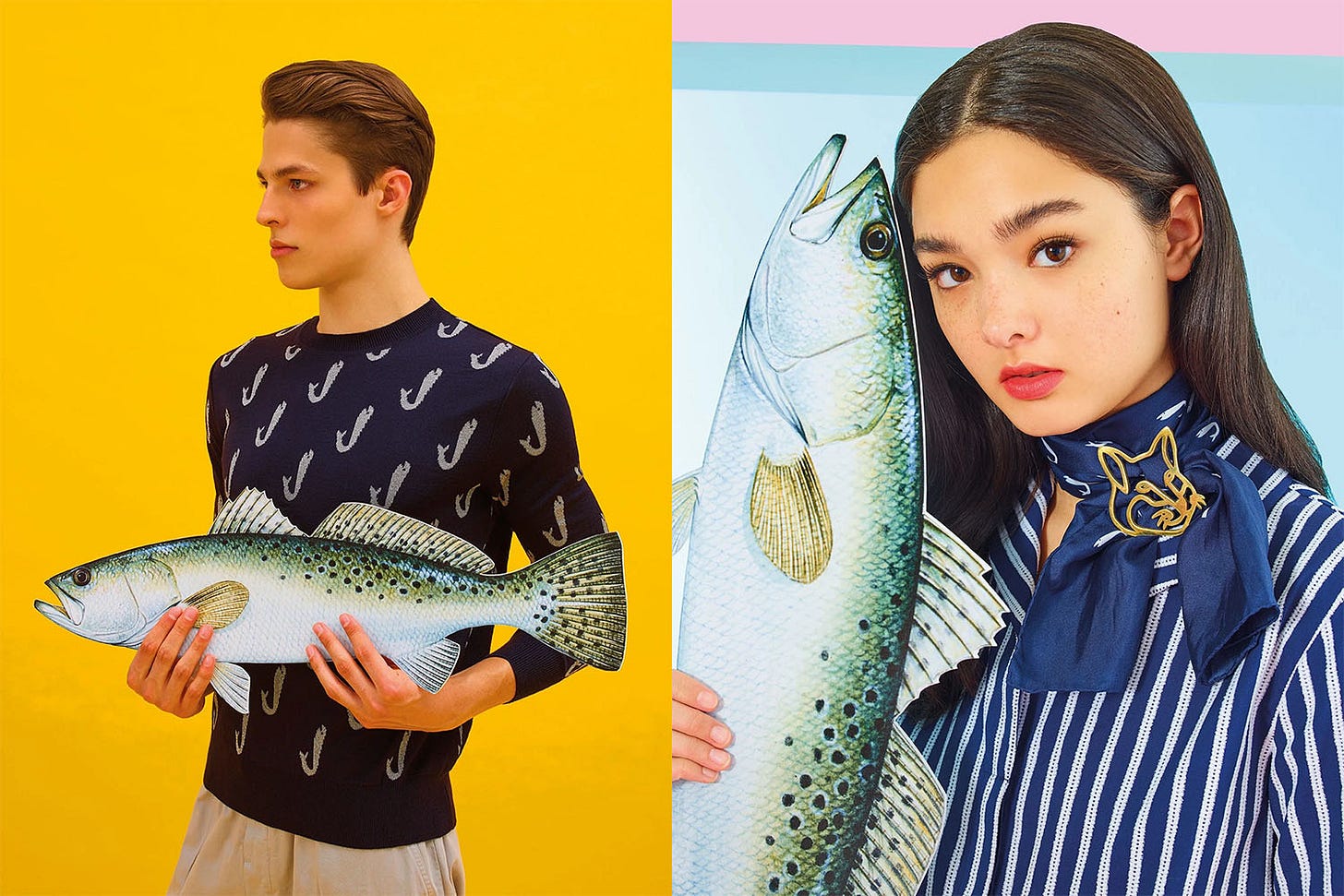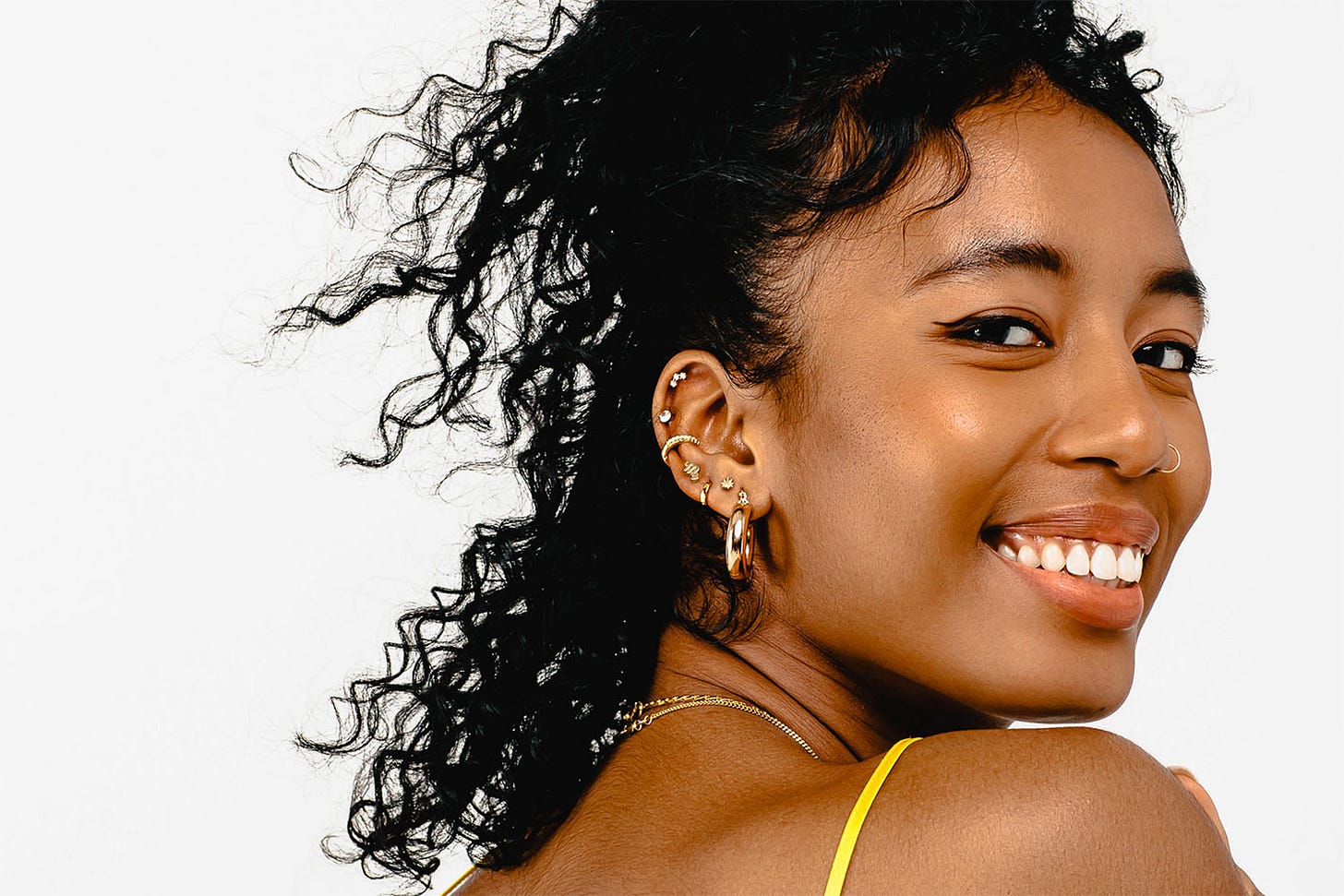Spring Break is here! *Puts on shades*

If you’re returning from last week, thanks! If you’re new, nice to have you! Join the squad and sign up here. Like what you see? Awesome, make it official and click the little ❤️ above to “like” my publication.
Manual 📸

Photography was one of my favorite classes in high school - there was something tantalizing about the analog process of developing film. In a world of instant gratification, film photography is a romantic window into how it used to be.
Manual is a sexy direct-to-consumer disposable company hoping to tap into this feeling. Their website fires on all hipster cylinders: edgy color scheme, blocky logo, and matching street apparel. Cameras cost $30 and come with 27 shot iso 400 Fujicolor film.
Maison Kitsuné 🦊

Maison Kitsuné began as a french record label founded by Masaya Kuroki and Gildas Loaëc in 2002. Kitsuné (which is Japanese for fox) started as a celebration of young artists and a fledgling clothing line.
Fast forward 18 years and the brand has expanded into a sizeable fashion empire, hosting events at nightclubs and bars around the world. They’ve launched 15 boutiques and centered their brand around Paris nightlife.
Their style reflects their french heritage with a Japanese twist: designs are simple, yet flamboyantly french. Merveilleux!
Studs 👂

What: Studs is an ear-piercing start-up looking to revolutionize the piercing experience for Gen Z by combining brick and mortar storefronts for piercing with online after-care items.
Who: Studs was founded by Anna Harman (previously Chief Customer Officer at Jetblack) and Lisa Bubbers (previously VP of Marketing Homepolish).
How: Harman believes “the market for ear piercing is split between the offline retailers who do the piercings themselves — either at mall shops or tattoo and piercing parlors — and the online retail side of the business, which makes it difficult to develop a relationship with customers”.
With $3 million in seed capital led by First Round, they’re hoping to fix that.
News I’m Following 👀
🛒 Amazon opened it’s first Amazon Go Grocery this week in Seattle. Amazon Go Grocery is a completely cashier-less grocery store. How does it work? When you enter the store, you scan yourself and everyone you’re with into the system. When you leave, all items that are with you are charged to your account automatically. Sounds like the future to me.
👍 Shopify joins the Libra alliance (Facebook’s cryptocurrency). This clocks membership in at 21 - which is a far stretch from Facebook’s targeted 100 before launch.
That being said, it’s still a big vote of confidence in Facebook’s new technology. As a member of the alliance, Shopify will pledge at least $10 million to the network.
Why is Shopify joining the Libra club? One big reason is Libra will have virtually zero transaction fees - which could be a big win for its merchants. Currently, they have to pay ~3% credit card fees on all transactions.
☠️ Canned water brand Liquid Death (yep, that’s the name) raised $9 million in a Series A funding. I’m sorry, what? Canned water?
Let’s dig into what’s going on here. Liquid Death is a prime example of a “community first” brand approach. Founder Mike Cessario identified a target community that traditional CPG brands weren’t hitting. As he stated on Product Hunt:
“In my past life as an ad agency creative director, I was always perplexed by the strict rules that brands and CPG products create for themselves. Why is it completely ok for a horror movie product to have blood and gore and profanity and make $250 million? Or why can a rapper like Eminem make some of the all-time highest grossing music products filled with controversial awesomeness? But then CPG products, like beverages, all have to play by 1950's rules and be safe, boring, corporate, functional, rational, and appeal to absolutely everyone? All we wanted to do with Liquid Death was to make a CPG product that gets to play by entertainment product rules”.
Genius.
Brand Study: Barbour 🦆

When I think of the quintessential British fashion brand, two companies come to mind: Burberry and Barbour. Today we are going to focus on the latter.
Barbour began as a workwear brand founded by John Barbour in 1894. He lived in the coastal town of South Shields, which would soon help popularize his emerging brand.
Barbour owned an oilcloth importing company and set about perfecting pre-existing processes of waxing cotton with paraffin wax. This became their signature water-resistant fabric that was perfect for the cold and wet climate of England. Barbour’s first adopters were South Shields’ fishermen and sailers.
In the 1930s, Barbour identified another customer base who loved his jackets: motorcycle riders. As motorcycles gained popularity, Barbour developed jackets specifically built for motorcyclists - larger collars and waist belts to secure his coats at speed.
By now Barbour had developed two types of waxed cloth:
“Sylkoil is an “unshorn” wax where the cotton comes straight from the loom while it’s slightly fluffy and is then dyed and waxed. The natural imperfections of the weave are reflected in the rich variations of color and finish. Over time, this fabric softens into a lovely, slightly peachy looking cotton between waxes.
Thornproof is a lustrous wax with a deep color and even touch. The cotton is calendered between rollers and then dyed. The resulting finish is smooth cotton which we term Thornproof because it is extremely resistant to snags and pulls from spiky plants such as brambles and hawthorn.”
WWII also helped increase the visibility of the Barbour brand. Their jackets were used by the British army to keep the soldiers dry and comfortable in the wet winters.
In the 1980s, the brand shifted from workwear to luxury as Queen and Prince of Wales gave Barbour royal warrants (appointed them to be used by the crown).
Today the brand still keeps most of its original styling and is owned privately by the 5th generation of the Barbour family.
They reported revenues of £225 million at the end of their 2018 fiscal year.
Here’s what works well for Barbour:
Functionality: Barbour jackets get the job done. They’ve always been function over form, yet the style has come into its own through association with ruggedness, sportsmanship, and royalty.
Heritage: Barbour is an old brand. They’ve fought alongside British countryman in WWII, and are worn by the royal family. That’s some strong brand equity.
Positioning: Barbour jackets are expensive, but not overbearing. Most jackets cost between $200 and $500.
Jobs 💼
TAFT - Brand Manager (UT)
Harry’s - Growth Analytics Lead (NYC)
Allbirds - Product Strategy Associate (SF)
Bombas - eCommerce Analytics Manager (NYC)
Burrow - Performance Marketing Senior Manager, Digital Product Manager (NYC)
Rothy’s - Growth Marketing Analyst (SF)
MATE the Label - Digital Marketing + eCommerce Manager (LA)
Internships 🎓
Roku - Product Strategy MBA Internship (LA)
Hint - Brand Management MBA Internship (SF)
Sephora - Digital Strategy MBA Internship (SF)
Quip - Growth Strategy MBA Internship (NYC)
Shareables 😏
💰 The great Buenos Aires bank heist: an all-star crew robs one of Argentina’s largest financial institutions.
🐶 Man’s best friend in Hollywood: an exhaustive list of types of movie dogs.
👩🎤 When you find out your ex-boyfriend’s new girlfriend is Lady Gaga.
👨🎨 Binned Art: fighting the good fight against soulless IKEA art with affordable fine art.
🎓 Getting an Ivy League education in… bartending? Many Ivy Leagues have a long tradition of offering courses in bartending.
👴 Feel the Bern: Inside the building of Bernie’s grassroots celebrity army.
🤩 Amazon scooped up Heidi Klum to create “Making the Cut”: a Project Runway Reboot.
🤔 A list of ideas, in no particular order and from different fields that help explain how the world works.
📱 Folding glass: The how, why, and truth of Samsung and Motorola’s new folding phone technology.
🃏 This week’s oldie but goodie: The story of Richard Turner, master card mechanic and 6th-degree blackbelt.
Hey! I’m Sean, a first-year MBA at the University of Michigan. Know of a new brand I should feature? Holla at me! I’d also love your feedback - feel free to shoot me a note at seansky@umich.edu.
And as always, if you like Intangible share it with your friends and click the little ❤️ below.


